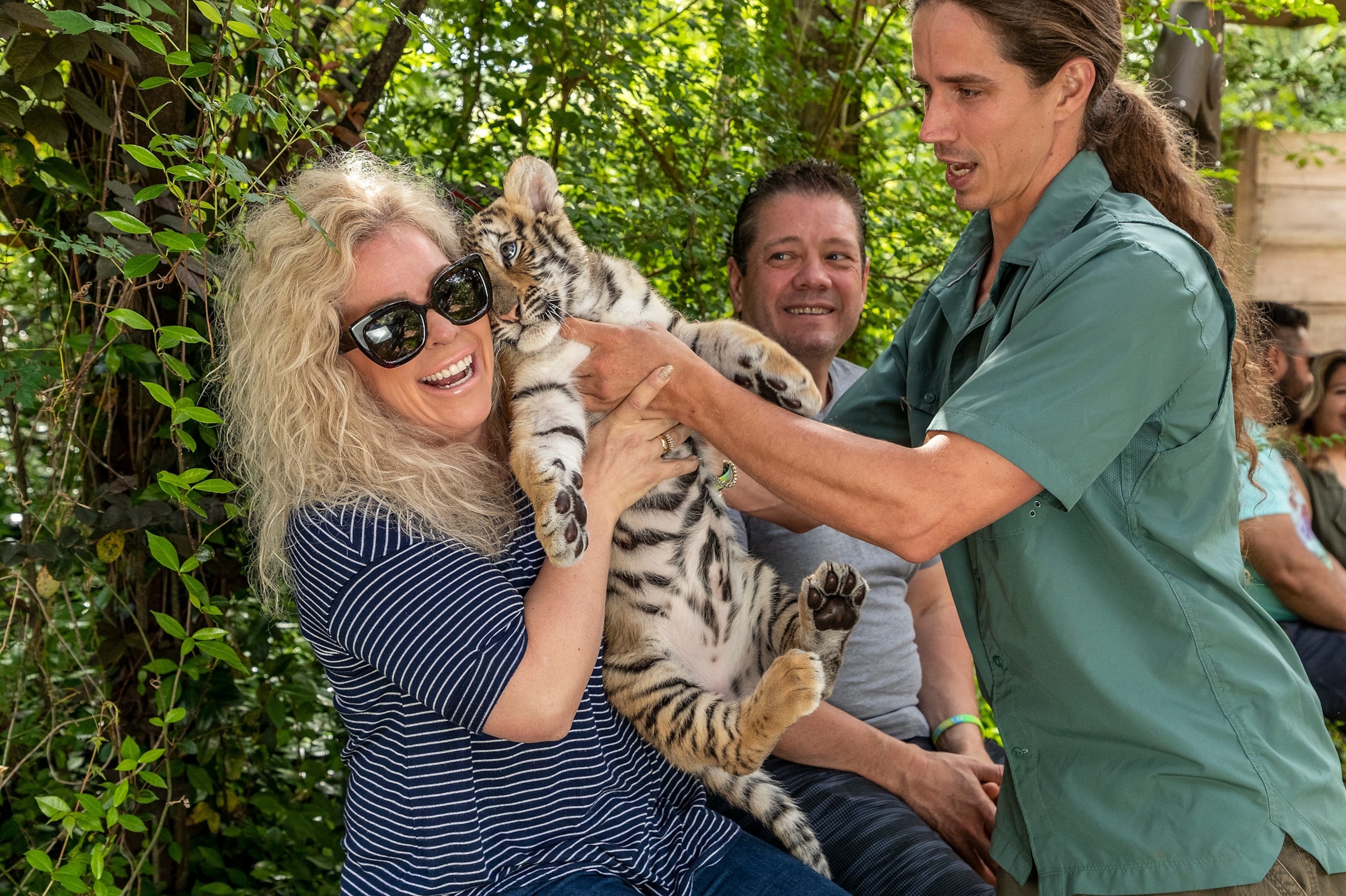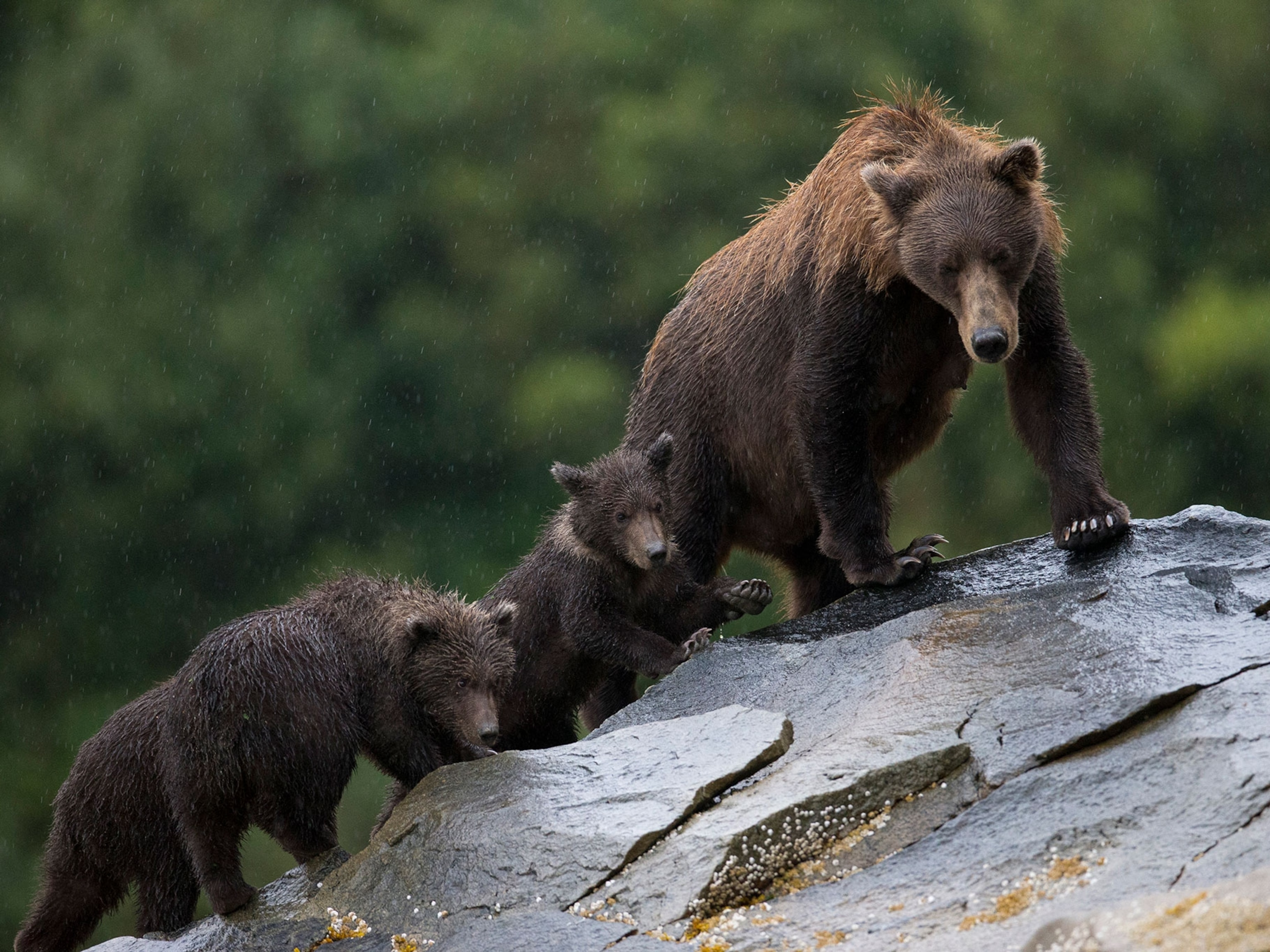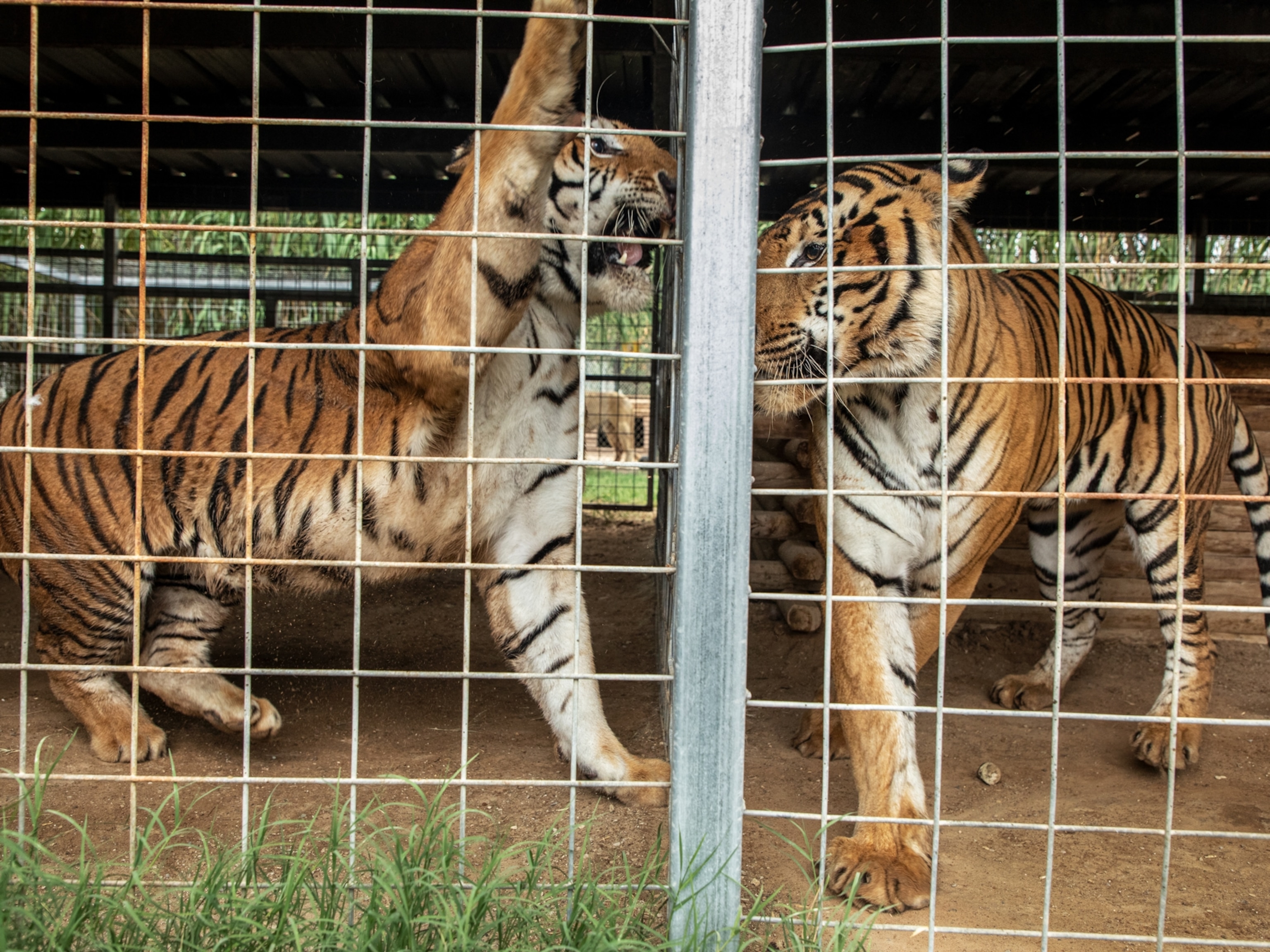
How ‘Tiger King’ helped kill the industry it made famous
Landmark U.S. legislation bans cub petting, tiger selfies, and breeding big cats as pets. What does that mean for the thousands of captive cats?
The lucrative cub-petting industry that the Netflix docuseries Tiger King thrust into the spotlight is now illegal in the United States.
The Big Cat Public Safety Act—which applies to lions, tigers, leopards, cheetahs, jaguars, cougars, or any hybrids of those species—was signed into law today with the president’s signature. The bill prohibits the practice of cub petting and any new breeding of big cats for private possession. It also makes it illegal for members of the public to have close contact with the animals, such as taking selfies while bottle-feeding tiger cubs.
Licensed zoos, sanctuaries, and academic institutions with big cats may continue to operate. Facilities may still exhibit their animals but cannot offer the public hands-on experiences. Private owners of big cats may also keep their animals, but no further breeding will be allowed, and they cannot obtain more cats. Owners must notify the U.S. Fish and Wildlife Service about their animals within 180 days of the law’s passage.
Earlier iterations of this animal welfare bill, first introduced a decade ago, stagnated until Tiger King. The House of Representatives passed the bill in July, and the White House supported it publicly. It cleared the Senate earlier this month.
Kate Dylewsky, senior policy advisor for government affairs at the Animal Welfare Institute, says the Netflix docuseries is sensationalist and “should have focused on the suffering of the animals.” But, she adds, it raised public awareness about animal welfare issues in the cub-petting industry and was “ultimately a beneficial factor for getting the bill across the finish line.”
With the proper licenses, breeding and exhibiting big cats and petting cubs up to a certain age has been legal. The U.S. Department of Agriculture, which is responsible for enforcing the Animal Welfare Act, has said that licensed facilities may exhibit cubs at approximately eight weeks of age and still comply with regulatory requirements, though the agency doesn’t encourage it. Contact with cubs under a month old, “including public feeding and handling,” has been prohibited.

Yet much of the industry’s oversight has fallen to the states, in part because the USDA doesn’t regulate wild animals kept as private pets. Twelve states had already banned public contact with big cats, some others regulated the practice, and a few had no regulations at all, according to the Humane Society of the United States. The organization estimates that the vast majority of the roughly 4,500 captive big cats in the U.S. are held in roadside zoos, with an unknown number likely kept as pets, either illegally or in states with no applicable laws. (Learn more: Captive tigers in the U.S. outnumber those in the wild. It’s a problem.)
Endless cub breeding
Selfies with big cats, as Tiger King made clear, have been a major source of revenue. But animal welfare advocates have sharply criticized business owners for, among other things, speed-breeding cubs and separating newborns from their mothers for tourist photos.
“It’s common practice to use cubs for photo-ops until they are too large to hold,” says Sara Amundson, president of the Humane Society Legislative Fund. “They are then dumped or sold, which simply perpetuates the cycle,” she says, adding that unwanted cats often languish in substandard facilities or even are killed. Others have ended up as pets in backyards and basements and may pose a public safety threat that local law enforcement and communities are ill-equipped to handle. Since 1990, more than 400 dangerous incidents have occurred involving captive big cats, according to the Humane Society of the United States.
Some discarded animals may be smuggled into the black market for their body parts, perpetuating demand for products such as tiger bone wine and medicinal paste that are a major threat to wild tigers, says Leigh Henry, director of wildlife policy at the World Wildlife Fund. The items are sought in China and elsewhere. “Given the lack of regulation, it would be easy for those tigers to filter into the illegal tiger trade,” she says.

Only an estimated 4,000 tigers remain in the wild today.
The thousands of captive tigers in the U.S. have been a source of contention during international discussions about shutting down tiger farms in China, Vietnam, Laos, and Thailand, Henry says. Countries have asked why the U.S. hasn’t ended its own industry. Passage of the new bill, she says, “takes away that deflection point, and we can hopefully make progress.”
Many facilities highlighted in Tiger King have been forced to surrender their animals because of violations of the Animal Welfare Act, decreasing the number of well-known cub-petting offerings. Now, only two U.S. exhibitors advertise cub petting for selfies, according to the Humane Society, although more may offer them without publicly promoting them.
Amundson urges any big cat owners who no longer want to keep their animals to place them in humane sanctuaries accredited by the Global Federal of Animal Sanctuaries.





